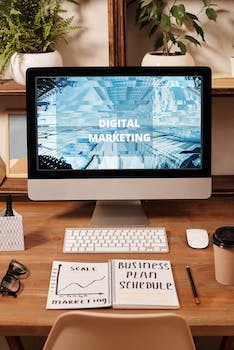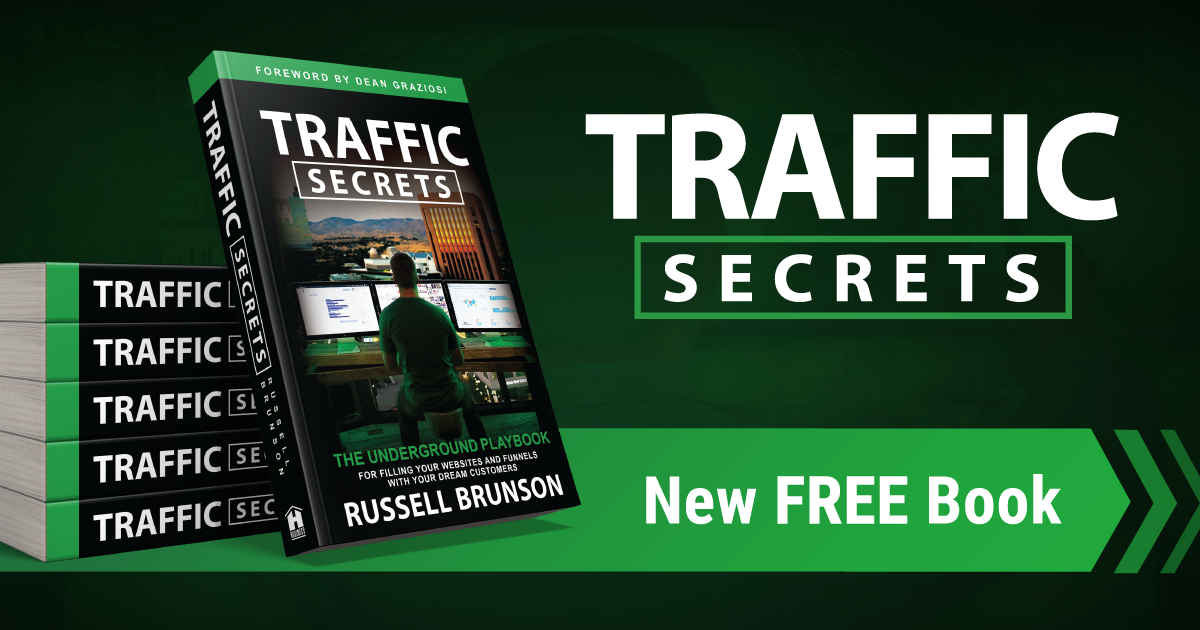Archive
The Role of Landing Pages in Your PPC Strategy
As a digital marketer, one of the most important things I focus on is my pay-per-click or PPC strategy. PPC advertising allows me to drive targeted traffic to my website by bidding on keywords and placing ads on search engines like Google. However, simply driving traffic isn’t enough. I need to make sure visitors take action once they land on my site.
This is where landing pages come in. Landing pages are dedicated web pages designed specifically for PPC traffic. They have one main goal: to get visitors to convert by filling out a form, making a purchase, signing up for a trial, etc.

Landing pages are essential for an effective PPC strategy for a few reasons:
They are highly targeted. I can design landing pages tailored to specific ad groups, keywords, and offers. This allows me to give visitors exactly what they are looking for based on how they found my site.
They streamline the experience. By removing navigation bars and links to other parts of the site, I can focus the visitor’s attention on converting. This minimizes distractions and helps guide the user to take action.
They allow for A/B testing. I can create multiple versions of the same landing page and test different headlines, copy, images, form fields, button text, and more. Then I analyze the results to see which version has the highest conversion rate and make that my default.
They provide useful metrics. By tracking how visitors interact with my landing pages, I can gain valuable insights into what’s working and not working with my PPC campaigns. Things like bounce rates, conversion rates, and click-through rates help me optimize my ads and keywords for better performance.
In summary, landing pages are a must-have for any PPC marketer looking to get the most out of their advertising spend. They help ensure that your hard-earned traffic is converting into leads and sales. By designing highly-targeted landing pages and continuously optimizing them, you’ll boost your return on investment and build a successful PPC strategy.
This post may contain affiliate links, where I may receive a small commission if you purchase something through following the link at no cost to you.
Creating a High-Converting Sales Funnel: Tips and Tricks
Creating a high-converting sales funnel is essential for any business that wants to succeed. It’s not enough to have a great product or service; you need to be able to sell it effectively. In this post, I’ll be sharing some tips and tricks on how to create a sales funnel that converts.
First of all, it’s important to understand what a sales funnel is. A sales funnel is a series of steps that a potential customer goes through before they make a purchase. It starts with awareness of your brand or product, then moves on to interest, consideration, and finally, the purchase stage.
The first step in creating a high-converting sales funnel is to identify your target audience. You need to know who you’re selling to in order to create a funnel that will resonate with them. Once you’ve identified your target audience, you can start creating content that will attract them.

The next step is to create a landing page that is specifically designed to convert visitors into leads. Your landing page should have a clear and compelling headline, a strong call-to-action, and a lead magnet that will entice visitors to provide their email address.
Once you have captured a lead, it’s important to nurture them with targeted email campaigns. Your email campaigns should provide value to your leads and build trust with them over time. You can also segment your email list based on the actions they take on your website, such as downloading a lead magnet or adding a product to their cart.
The final stage of your sales funnel is the purchase stage. Your checkout process should be simple and straightforward, making it easy for customers to complete their purchase. You can also offer upsells and cross-sells to increase the average order value.
In conclusion, creating a high-converting sales funnel takes time and effort, but it’s worth it in the end. By understanding your target audience, creating a compelling landing page, nurturing leads with targeted email campaigns, and optimizing your checkout process, you can create a sales funnel that converts visitors into customers.
This post may contain affiliate links, where I may receive a small commission if you purchase something through following the link at no cost to you.
Maximizing ROI with PPC Advertising: Tips and Tricks
When it comes to pay-per-click advertising, maximizing your return on investment is key. As a digital marketer, I’m always looking for ways to get the most out of my PPC campaigns and make sure I’m not wasting money on low-performing ads or keywords. Here are some of the tips and tricks I’ve learned over the years to maximize ROI with PPC:

Focus on relevant keywords. The keywords you choose to bid on have a huge impact on your campaign’s success. Make sure you’re bidding on keywords that are highly relevant to your product or service. Irrelevant keywords will just waste your money by attracting low-quality traffic. Do keyword research to find the best options.
Set a reasonable budget. Don’t go overboard with your PPC budget, especially when you’re first getting started. Start with a modest budget and scale up slowly as you gain more data about what’s working. A budget that’s too large can lead to wasted spend before you’ve optimized the campaign.
Use negative keywords. Negative keywords prevent your ads from showing for irrelevant searches. Add negative keywords like “free,” “jobs,” or “careers” to avoid attracting people who aren’t interested in actually making a purchase. This helps ensure the traffic you get is high-quality.
Optimize your ads. Well-optimized PPC ads can achieve a higher click-through rate, lower cost-per-click, and better conversion rates. Try different ad copy, placements, and landing pages to see what works best. The more relevant and compelling your ads are, the better your ROI will be.
Analyze and refine. PPC optimization is an ongoing process. Analyze how your campaign is performing at least weekly and make changes to improve ROI. Look at metrics like impressions, clicks, CTR, conversions, and cost per conversion. Make adjustments to your keywords, ads, landing pages, and budget as needed to maximize your return on investment.
This post may contain affiliate links, where I may receive a small commission if you purchase something through following the link at no cost to you.
Why Every Business Needs a Sales Funnel
As a business owner, I know how tough it is to attract and retain customers. But I’ve discovered that having a sales funnel is the secret to success.
A sales funnel is a series of steps that a potential customer goes through before making a purchase. It involves attracting leads, nurturing them with targeted content, and ultimately converting them into paying customers.
Here’s why every business needs a sales funnel:

1. It helps you understand your customers
By creating a sales funnel, you can gain insights into your customers’ behavior and preferences. You can identify the touchpoints where they are most likely to convert and optimize those areas for better results. This allows you to tailor your marketing efforts to fit your customers’ needs and improve your overall sales strategy.
2. It increases conversions
A sales funnel is designed to guide customers towards a purchase. By providing valuable content and nurturing leads, you can build trust and increase the likelihood of a sale. The more targeted and personalized your funnel is, the higher your conversion rates will be.
3. It saves time and resources
Without a sales funnel, you may be wasting time and resources on unqualified leads. By using a sales funnel, you can focus on high-quality leads who are more likely to convert. This can save you time and money in the long run and help you maximize your ROI.
4. It builds relationships
A sales funnel is not just about making a sale. It’s also about building relationships with your customers. By providing valuable content and engaging with your audience, you can establish trust and loyalty. This can lead to repeat customers and positive word-of-mouth marketing.
In conclusion, a sales funnel is a crucial component of any successful business. It helps you understand your customers, increase conversions, save time and resources, and build relationships. So, if you haven’t already, it’s time to start building your own sales funnel and watch your business grow.
This post may contain affiliate links, where I may receive a small commission if you purchase something through following the link at no cost to you.
The Importance of Lead Magnets in Your Sales Funnel
Hey there! As someone who has been working in the world of online marketing for a while, I can confidently say that lead magnets are a crucial part of any successful sales funnel. In fact, I’d go so far as to say that they’re the foundation upon which the rest of your funnel is built.
So, what exactly are lead magnets? Essentially, they’re free resources that you offer to your audience in exchange for their contact information. This could be anything from an ebook or whitepaper, to a free trial of your product or service, to a webinar or video training series. The key is that it’s something valuable enough that people are willing to hand over their email address or phone number in order to access it.
Now, you might be wondering why you need to bother with lead magnets in the first place. After all, can’t you just drive traffic to your site and hope that people will eventually convert into paying customers? The short answer is no.

Here’s the thing: people are bombarded with marketing messages all day, every day. They’re not going to just hand over their hard-earned money to a company they don’t know and trust. That’s where lead magnets come in. By offering something of value upfront, you’re establishing yourself as a helpful, trustworthy resource in your audience’s eyes. It’s the first step in building a relationship with them.
But that’s not the only benefit of lead magnets. They also help you to:
- Build your email list. As I mentioned earlier, people need to provide their contact information in order to access your lead magnet. This means that you’re growing your email list with engaged, interested leads who are more likely to convert in the future.
- Segment your audience. Depending on the type of lead magnet you offer, you can gather information about your audience’s interests, pain points, or needs. This allows you to segment them into different groups and tailor your messaging to each group’s specific needs.
- Qualify leads. By offering a lead magnet that’s directly related to your product or service, you’re attracting leads who are already interested in what you have to offer. This makes them more qualified leads than someone who stumbled upon your site by accident.
So, how do you create a lead magnet that’s effective? Here are a few tips:
- Make it valuable. This should go without saying, but your lead magnet needs to actually be something your audience wants and needs. Do some research to find out what topics or pain points your audience is struggling with, and create a resource that addresses those issues.
- Make it easy to access. Don’t make people jump through hoops to get their hands on your lead magnet. Keep the opt-in process simple and straightforward.
- Promote it. Your lead magnet won’t do you any good if nobody knows it exists. Use social media, email marketing, and other channels to promote it and drive traffic to your opt-in page.
All in all, lead magnets are an essential part of any sales funnel. By offering something of value upfront, you’re building trust with your audience and laying the groundwork for future sales. So, what are you waiting for? Start brainstorming your next lead magnet today!
This post may contain affiliate links, where I may receive a small commission if you purchase something through following the link at no cost to you.
Understanding Funnels: The Key to Optimizing Your Sales Process
As a business owner, one of the most important things you need to know is how to optimize your sales process. And one of the most crucial aspects of this process is understanding funnels.
When I first started my business, I had no idea what a funnel was. I thought it was some complicated marketing strategy that only the big companies used. But as I started to learn more about it, I realized that it’s actually a simple concept that can make a huge difference in your sales.
So, what is a funnel?

A funnel is simply a visual representation of the journey that your customers go through before they make a purchase. It starts with the awareness stage, where they become aware of your product or service. Then it moves to the consideration stage, where they start to research and evaluate your product. Finally, it ends with the decision stage, where they make the purchase.
Understanding this journey is key to optimizing your sales process because it allows you to identify where customers are dropping off and where you need to make improvements. For example, if you’re getting a lot of traffic to your website but not many conversions, it could be a sign that your website needs to be more user-friendly or that your messaging needs to be clearer.
How can you optimize your funnel?
Once you understand your funnel, there are several things you can do to optimize it:
- Identify the drop-off points: Use analytics tools to identify where customers are dropping off in your funnel. This could be on your website, during the checkout process, or in your email campaigns.
- Make improvements: Once you’ve identified the drop-off points, make improvements to your website, messaging, or campaigns to address them. This could be as simple as tweaking your copy or redesigning your checkout process.
- Test and iterate: Don’t assume that your improvements will automatically work. Test them out and see how they perform. Then iterate and make further improvements as needed.
Why is optimizing your funnel important?
Optimizing your funnel is important because it can lead to higher conversions and more sales. By understanding where customers are dropping off and making improvements to your process, you can create a smoother, more effective sales process that leads to more satisfied customers and more revenue for your business.
In conclusion, understanding funnels is a key component of optimizing your sales process. By understanding the journey that your customers go through and identifying areas for improvement, you can create a more effective sales process that leads to more conversions and more sales.
This post may contain affiliate links, where I may receive a small commission if you purchase something through following the link at no cost to you.
Segmenting Your Sales Funnel: How to Personalize Your Marketing Efforts
Hey there, fellow marketers!
As we all know, having a sales funnel is essential to any business. It’s the process that leads potential customers towards making a purchase. But did you know that segmenting your sales funnel is just as crucial? By doing so, you can personalize your marketing efforts and increase your conversion rates.
What is Segmenting Your Sales Funnel?

Segmenting your sales funnel means dividing your potential customers into specific groups or segments based on their behavior, interests, preferences, or demographics. By doing this, you can create targeted marketing messages that resonate with each segment, increasing the chances of them moving down the funnel.
Why Should You Segment Your Sales Funnel?
Segmenting your sales funnel has several benefits:
- Personalization: By targeting specific segments, you can create personalized marketing messages that speak directly to them, increasing the chances of them engaging with your brand.
- Higher conversion rates: Personalized marketing messages lead to higher conversion rates because they resonate better with potential customers.
- Cost-effectiveness: By focusing your marketing efforts on specific segments, you can save money on advertising and other marketing expenses.
- Better customer relationships: By delivering personalized messages, you can build stronger relationships with your customers, increasing their loyalty to your brand.
How to Segment Your Sales Funnel?
Segmenting your sales funnel involves several steps:
- Define your target audience: Identify the characteristics of your ideal customer, such as age, gender, location, interests, and behavior.
- Create buyer personas: Develop buyer personas for each segment based on their characteristics. This will help you understand their needs, pain points, and motivations.
- Track customer behavior: Use analytics tools to track customer behavior, such as website visits, email opens, and social media engagement. This will help you identify which segments are most engaged with your brand.
- Create targeted marketing messages: Create marketing messages that speak directly to each segment. This could include personalized emails, targeted social media ads, or customized landing pages.
- Test and optimize: Continuously test and optimize your marketing messages to improve their effectiveness.
Conclusion
Segmenting your sales funnel is a powerful way to personalize your marketing efforts and increase your conversion rates. By targeting specific segments with personalized messages, you can build stronger relationships with your customers, save money on advertising, and improve your overall marketing ROI. So, what are you waiting for? Start segmenting your sales funnel today!
This post may contain affiliate links, where I may receive a small commission if you purchase something through following the link at no cost to you.
Building a Sales Funnel: Tips and Best Practices for Success
Hey there! As a sales professional, I know that building a sales funnel can seem like a daunting task. But trust me, it’s worth the effort. A sales funnel is a powerful tool that can help you convert leads into loyal customers, and ultimately, increase revenue. In this blog post, I’ll share some tips and best practices that have worked for me when building sales funnels.
Define Your Ideal Customer

The first step in building a sales funnel is defining your ideal customer. Who are they? What are their pain points? What motivates them to buy? The more you understand your ideal customer, the easier it will be to create a sales funnel that speaks directly to their needs and desires.
Create a Lead Magnet
A lead magnet is a valuable piece of content that you offer to potential customers in exchange for their contact information. This could be an e-book, a free trial, a webinar, or anything else that your ideal customer would find helpful. By offering something of value, you can capture leads and begin the process of nurturing them through your sales funnel.
Use Email Marketing
Email marketing is a great way to nurture leads and move them through your sales funnel. By sending targeted, personalized emails, you can build relationships with potential customers and keep your brand top-of-mind. Just be sure to follow best practices for email marketing, such as segmenting your list and sending relevant content.
Create a Landing Page
A landing page is a dedicated page on your website that’s designed to convert leads into customers. It should be focused and free of distractions, with a clear call-to-action. Use your landing page to showcase the benefits of your product or service and make it easy for potential customers to take the next step in the sales process.
Measure Your Results
Finally, it’s important to measure your results and optimize your sales funnel for maximum success. Use analytics tools to track your conversion rates and identify areas for improvement. Test different elements of your funnel, such as your lead magnet or landing page, to see what works best for your audience.
Building a sales funnel takes time and effort, but it’s well worth it. By understanding your ideal customer, creating a lead magnet, using email marketing, creating a landing page, and measuring your results, you can build a powerful sales funnel that drives revenue and growth for your business.
This post may contain affiliate links, where I may receive a small commission if you purchase something through following the link at no cost to you.
A/B Testing Your Sales Funnel: Strategies for Improving Your Conversion Rates
As a marketer, I know how important it is to constantly improve your sales funnel. That’s why I always turn to A/B testing to help me figure out what strategies are most effective for improving my conversion rates. In this post, I’ll share some of my favorite A/B testing strategies for optimizing your sales funnel.
Start with the Basics
Before you can begin A/B testing your sales funnel, you need to have a solid understanding of what your sales funnel looks like. This means mapping out each stage of the funnel, from awareness to conversion. Once you have a clear picture of your current funnel, you can start to identify areas that need improvement.
Test Your Landing Page

Your landing page is often the first point of contact between your brand and potential customers. It’s crucial that your landing page is optimized for conversion. You can A/B test different landing page elements such as headlines, images, and call-to-actions to see what works best for your audience.
Experiment with Forms
Your lead capture forms are another important element of your sales funnel. You can test different form lengths, form layouts, and form fields to see what leads to higher conversion rates. Just be careful not to make your forms too long or complicated, as this can actually deter potential leads.
Play with Pricing
Pricing is a tricky element to test, but it can be incredibly effective in improving your conversion rates. You can experiment with different pricing structures, discount codes, and payment plans to see what resonates best with your audience. Just be sure to keep an eye on your profit margins to ensure that any changes to pricing are sustainable.
Test Your Email Marketing
Email marketing is a powerful tool for nurturing leads and driving conversions. You can A/B test different email subject lines, email body copy, and call-to-actions to see what gets the best response from your audience. Just be sure to segment your email list so that you can accurately measure the impact of your tests.
Measure Your Results
Finally, it’s essential that you measure the results of your A/B tests so that you can make informed decisions about how to optimize your sales funnel. Use a tool like Google Analytics to track your conversion rates, and be sure to test each element of your funnel one at a time so that you can accurately measure the impact of each change.
Overall, A/B testing is a powerful tool for improving your sales funnel and driving conversions. By experimenting with different elements of your funnel, you can identify what strategies work best for your audience and optimize your funnel accordingly. So get testing, and watch your conversion rates soar!
This post may contain affiliate links, where I may receive a small commission if you purchase something through following the link at no cost to you.
